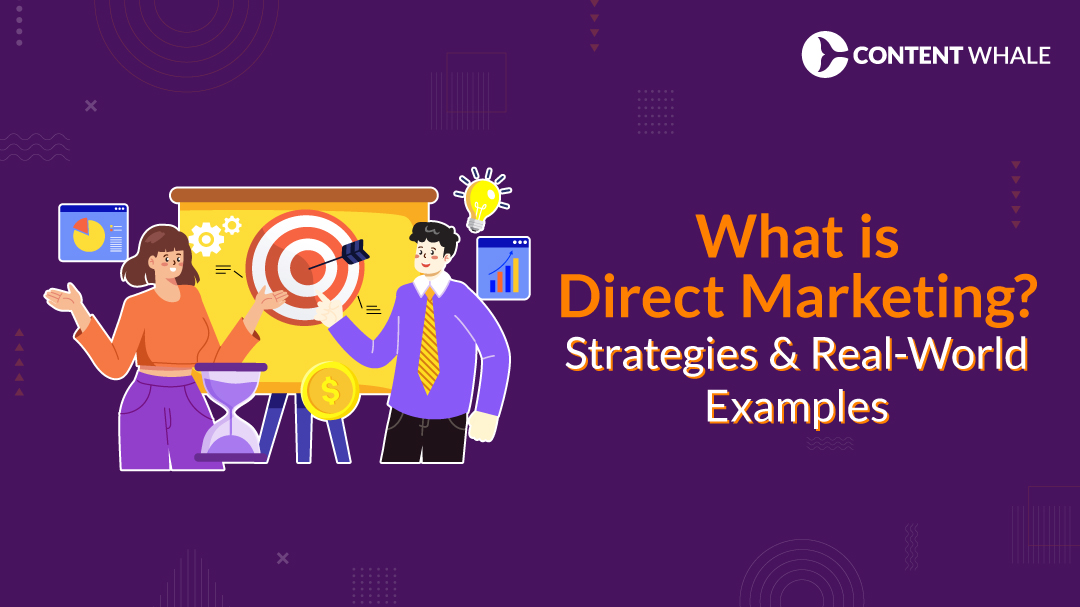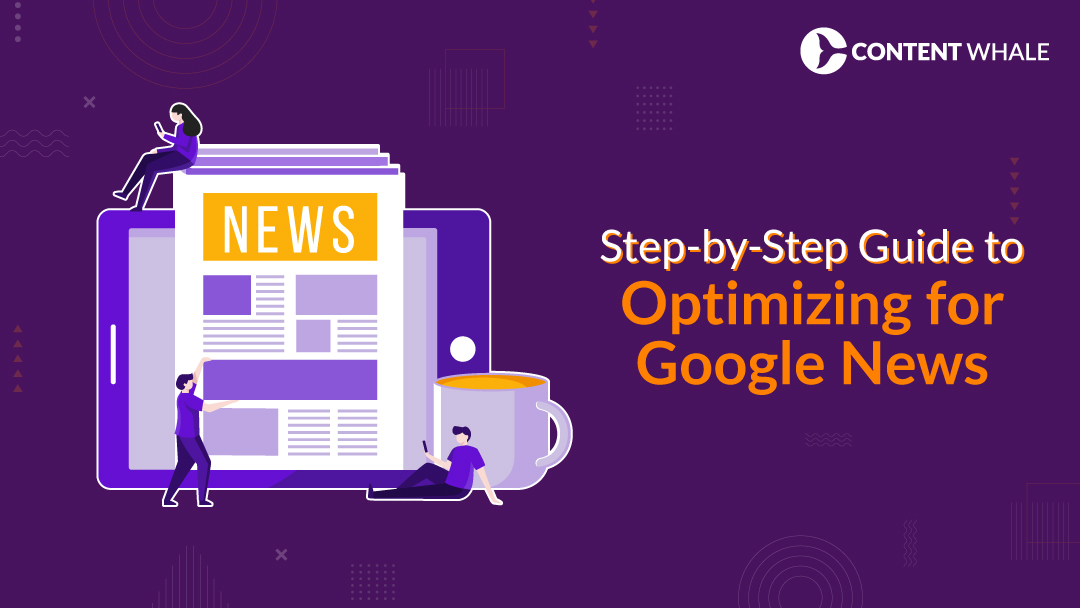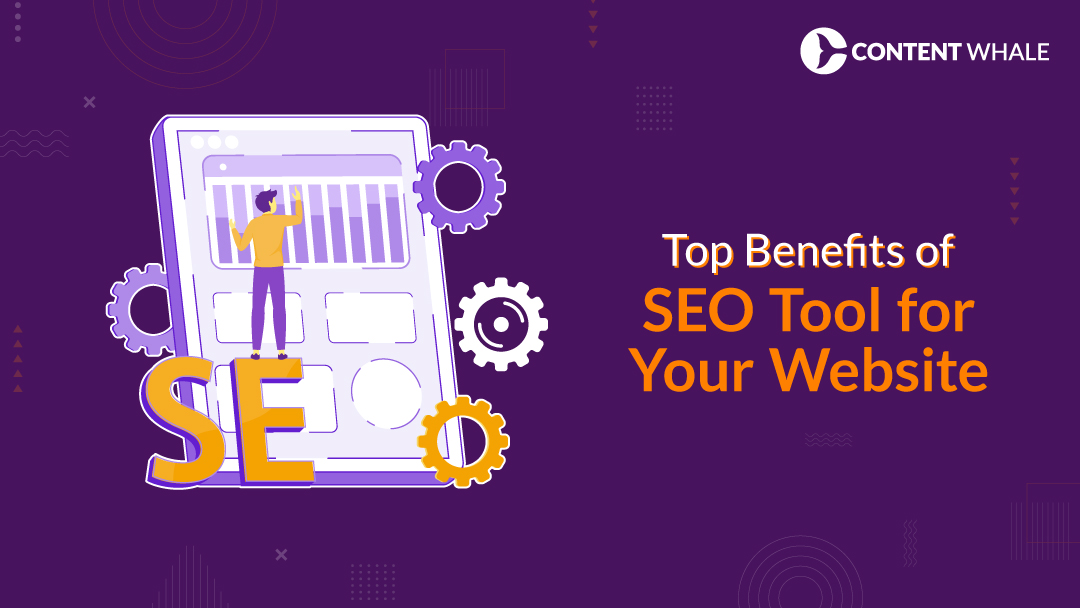Direct marketing is a promotional method that involves presenting information about your company, products, or services directly to your target customer without the use of an advertising middleman. It is characterized by its focus on clear, measurable responses from consumers, regardless of the medium.
This form of marketing utilizes various channels to reach customers. These channels include emails, personalized ads, social media platforms, text messages, and more traditional methods like direct mail such as brochures and catalogs. The primary goal is to encourage a specific action, whether it’s purchasing a product, signing up for a newsletter, or participating in an event.
Direct marketing is distinct from indirect marketing, where the communication is not directed to the consumer specifically but rather cast broadly through mass media, such as TV ads or billboards. The key advantage of direct marketing is that it allows for personalized, targeted communication that can be adjusted based on immediate feedback from the target audience.
This approach offers several benefits, such as the ability to reach out directly to those most likely to be interested in your products or services, which can lead to increased engagement and conversion rates. Additionally, it provides measurable results, which can help businesses adjust their marketing strategies quickly and efficiently to optimize their budgets.
However, direct marketing also has disadvantages. It can be perceived as intrusive, especially if it is not properly targeted or reaches a customer too frequently. Moreover, some methods, particularly physical mailings, can be costly and have a notable environmental impact. There’s also the challenge of ensuring compliance with increasingly stringent data protection laws, which govern how personal information can be collected, stored, and used.
Understanding these pros and cons can help you determine if direct marketing is suitable for your business goals and how to implement it effectively to engage and expand your customer base while respecting their privacy and preferences.
Direct Marketing Approaches with How-To Examples
Direct marketing thrives on effective strategies and real-time results. Let’s understand some proven approaches, along with how-to examples that illustrate their application in the real world.
1. Email Marketing
- How to Execute: Build an email list with consent through website sign-ups. Use email marketing tools for segmentation and personalized campaigns. For instance, create a welcome series for new subscribers with a special discount on their first order.
- Real-Life Example: Sephora sends personalized email recommendations based on previous purchases, encouraging repeat business and greater customer engagement.
2. SMS Marketing
- How to Execute: Gain consent via opt-in on your website or during checkout. Use SMS for timely promotions like flash sales. For example, send a text message early in the morning about a sale that runs for a limited time on the same day.
- Real-Life Example: Domino’s Pizza uses SMS marketing to send out weekly deals and coupons to drive both delivery and in-store traffic.
3. Social Media Marketing:
- How to Execute: Identify which social platforms your target audience frequents and create tailored content. Use ads manager for detailed targeting based on interests and behaviors.
- Real-Life Example: Nike uses Instagram to target athletic users with ads featuring new releases and exclusive collaborations, boosting engagement and directing traffic to their e-commerce platforms.
4. Direct Mail
- How to Execute: Segment your mailing list based on customer demographics and purchase history. Design compelling and visually appealing mail pieces like flyers, brochures, or sample packs.
- Real-Life Example: IKEA sends out catalogs with new product lines and special offers, personalized to include products that match the recipient’s previous purchases or browsing behavior on their website.
5. Experiential Marketing
- How to Execute: Create an event that embodies your brand’s message and appeals directly to your target audience’s interests. Promote the event across all your marketing channels.
- Real-Life Example: Red Bull is renowned for its engagement marketing events, such as the Red Bull Stratos space diving project, which not only captivated a global audience but also reinforced its brand image as associated with extreme sports and adventure.
These examples illustrate how direct marketing strategies can be effectively implemented across various industries, leveraging personalization and real-time engagement to enhance customer relationships and drive sales.
| Strategy | How to Execute | Real-Life Company Example | Description of Company Usage |
|---|---|---|---|
| Email Marketing | Build an email list through website sign-ups. Use tools for segmentation. | Sephora | Sends personalized emails based on purchase history to encourage repeat business and engagement. |
| SMS Marketing | Gain opt-in consent for SMS during checkout or via website. | Domino’s Pizza | Uses SMS to send weekly deals and coupons, driving both delivery and in-store traffic. |
| Social Media Marketing | Identify target platforms and create tailored content. Use detailed targeting for ads. | Nike | Utilizes Instagram ads targeting athletic users with new releases and exclusive collaborations to boost engagement. |
| Direct Mail | Segment mailing list by customer demographics and history. Design appealing mail pieces. | IKEA | Sends out personalized catalogs featuring products that align with the recipient’s past purchases or interests. |
| Experiential Marketing | Create brand-embodied events and promote extensively. | Red Bull | Known for engaging marketing events like the Red Bull Stratos project, enhancing brand association with adventure. |
Each of these strategies highlights the unique advantages of direct marketing: personalized engagement, measurable results, and the ability to adapt quickly to market responses. By implementing these methods thoughtfully, businesses can significantly enhance their marketing effectiveness and achieve better engagement and conversion rates.
Direct Marketing Examples in India
The Indian market offers a vivid showcase of direct marketing, with brands employing innovative strategies to engage consumers effectively. Here are several noteworthy examples:
1. Amazon and Flipkart
Major platforms like Amazon India and Flipkart use flash sales, such as “Big Billion Days” and “Great Indian Festival,” to drive significant traffic and sales. These campaigns are aggressively promoted across multiple direct marketing channels including SMS, email, and social media, using real-time analytics to maximize conversions.
2. Amul
Known for its quick-witted social media content, Amul frequently uses current events and trends to create engaging posts that resonate with a wide audience. Their strategy not only enhances brand visibility but also keeps the audience entertained and connected.
3. HDFC Bank
Emphasizing customer-centric marketing, HDFC Bank utilizes social media platforms to provide valuable financial tips and engage with customers through contests and interactive content. This approach helps in maintaining a relatable and approachable brand image.
4. Tata Tea
Tata Tea’s campaigns often tackle social issues, making a strong emotional connection with their audience. Their marketing strategies are designed to resonate on a deeper level, thus creating lasting brand loyalty through impactful messages (Trusted by 3000+ happy customers).
5. Mi Lifestyle Marketing Global Private Limited
This company stands out in the direct selling market by offering a range of lifestyle products through a network of authorized dealers. Their approach allows for personal interactions and demonstrations, enhancing customer trust and satisfaction.
6. Atomy India
Specializing in health and personal care products, Atomy uses a single-level marketing strategy that allows for direct customer engagement and personalized service, which is critical in building customer loyalty and trust in the brand.
| Company | Campaign | Strategy Details | Engagement Strategy |
|---|---|---|---|
| JioCinema | Peacock Hub | Uses CGI and conventional storytelling to create unique narratives. | Engages audiences with comically surreal imagery and situations. |
| Dream11 | Fantasy Cricket Challenge | Features Bollywood actors in a humorous cricket challenge scenario. | Achieved viral status with over 100 million YouTube views. |
| Bisleri | Greener Promise | Highlights sustainable practices in operations. | Uses emotional appeal and environmental responsibility. |
| CRED | Fills Most Voids ft. Zeenat Aman | Blends existential themes with practical solutions for payments. | Captures attention with Bollywood glamor and wit. |
| Starbucks India | It Starts With Your Name | Celebrates diversity and inclusivity focusing on personal identity. | Promotes recognition and respect for individuality. |
These examples illustrate the dynamic and diverse ways in which direct marketing is being leveraged in India to build brand presence and consumer engagement. Each company adapts its strategy to the cultural and consumer landscapes, showing that understanding your audience is key to direct marketing success.
These examples reflect a blend of traditional direct marketing tactics and modern digital strategies, illustrating the dynamic and innovative nature of India’s marketing sector. As technology continues to evolve, so too does the approach to direct marketing, with a strong emphasis on personalization, efficiency, and ethical considerations.
Advantages of Direct Marketing
Direct marketing is a highly favored strategy for its targeted approach and measurable results. Here are the key benefits:
1. Targeted Communication
Direct marketing allows businesses to reach specific segments of the market. This focused approach ensures that marketing messages are received by individuals most likely to be interested in the product or service.
2. Personalization
It facilitates customized messages that cater to the interests and needs of the audience. Personalized marketing increases the likelihood of customer engagement and sales, as recipients feel the business understands their specific desires or requirements.
3. Cost-Effectiveness
Compared to broad-spectrum advertising, direct marketing often requires less investment. It avoids the scattergun approach of mass media, reducing wasted coverage and focusing funds on prospects more likely to convert.
4. Measurable Results
One of the most significant advantages is the ability to measure the success of campaigns. Businesses can track responses, analyze engagement levels, and adjust strategies in real time to improve effectiveness.
5. Quick Adaptation
Direct marketing campaigns can be launched rapidly and modified quickly based on customer feedback and analytics. This agility allows businesses to respond to market changes or consumer trends more swiftly than with traditional marketing methods.
6. Increased Sales to Existing Customers
By maintaining direct contact, businesses can encourage repeat purchases and enhance customer loyalty. Direct marketing strategies like email promotions or exclusive offers drive additional sales, leveraging existing relationships.
7. Development of New Customer Relationships
By reaching out directly to potential customers, businesses can quickly establish new relationships. Direct marketing provides the initial touchpoint that can be nurtured into long-term engagement.
These benefits make direct marketing a robust tool for businesses aiming to maximize their marketing efficiency and return on investment.
Disadvantages of Direct Marketing
Despite its many advantages, direct marketing comes with challenges that can impact its effectiveness and reception:
1. Perception as Intrusive
Direct marketing tactics, especially cold calls and unsolicited emails, can be perceived as intrusive or annoying. This negative perception can affect brand image if not managed carefully.
2. High Opt-Out Rates
Due to the direct nature of the communication, recipients may opt out of marketing messages more frequently, especially if they feel bombarded. This reduces the effectiveness of future campaigns.
3. Privacy Concerns
With increasing awareness about data privacy, consumers are cautious about how their information is used. Misuse of data or perceived invasion of privacy can lead to distrust and legal issues.
4. Variable Response Rates
Not all direct marketing campaigns guarantee high response rates. Some audiences may not engage at the desired level, leading to lower than expected returns on investment.
5. Costs Can Escalate
While direct marketing can be cost-effective, certain forms like direct mail and personalized printing can become expensive, especially with large scale campaigns that require high-quality materials.
6. Keeping Content Fresh
Engaging customers consistently over time requires fresh and relevant content. This can be a significant challenge as interests and market dynamics change rapidly.
7. Regulatory Compliance
There are stringent laws regulating direct marketing practices, such as GDPR in Europe and similar regulations worldwide. Compliance requires resources and continuous monitoring, adding complexity and cost.
| Aspect | Advantages | Disadvantages |
|---|---|---|
| Targeting | Direct marketing allows precise targeting of specific consumer segments. | Misdirected targeting can lead to wasted resources and marketing efforts. |
| Personalization | Messages can be personalized, which increases engagement and conversion rates. | High personalization requires extensive data collection, which can raise privacy concerns. |
| Cost-Efficiency | Generally more cost-effective than mass media advertising, with lower cost per contact. | Some forms, like direct mail or high-quality printing, can be expensive. |
| Measurability | Results are easily measurable, allowing for quick adjustments and optimization of strategies. | Not all campaigns will achieve high response rates, which can make some efforts seem less effective. |
| Speed | Campaigns can be executed quickly, and responses can be received almost immediately. | Rapid tactics like cold calling or mass emails can be perceived as intrusive and damage brand image. |
| Customer Loyalty | Effective for enhancing customer retention and encouraging repeat business. | Overuse can lead to marketing fatigue, where customers become desensitized to communications. |
| Regulatory Compliance | Ensures communication is legally compliant, protecting consumer rights. | Navigating legal regulations requires resources and can be complex, especially in different regions. |
Understanding these challenges is essential for businesses to strategize effectively and mitigate potential downsides of direct marketing.
Direct marketing remains a vital strategy for businesses seeking direct engagement with their customers. It combines precision targeting, personalization, and measurability, making it a valuable tool for fostering customer relationships and driving sales.
Businesses can utilize various direct marketing approaches to connect with their audience. Email campaigns, social media interactions, and SMS marketing are just a few examples that allow for personalized communication directly tailored to the consumer’s needs and preferences. These approaches help in enhancing customer engagement and boosting conversion rates.
However, the strategy is not without its challenges. Issues such as potential invasiveness, high opt-out rates, and privacy concerns must be carefully managed to maintain customer trust and compliance with regulations. Moreover, the costs associated with certain direct marketing tactics, like printed mailers or telemarketing, can add up, particularly if not well-targeted.
To navigate these challenges, businesses should focus on creating relevant, engaging content and respecting their audience’s privacy and preferences. By doing so, they can maximize the advantages of direct marketing and mitigate its disadvantages.
For companies in India, adapting direct marketing to local cultures and consumer behaviors is crucial. Innovative strategies such as using micro-influencers, leveraging new technologies like voice search, and engaging customers through interactive content can set businesses apart in a competitive market.
Ultimately, what is direct marketing if not a chance to build closer connections with your audience? With thoughtful implementation, direct marketing can be a dynamic component of your overall marketing strategy, adaptable and responsive to the changing digital landscape.

What are the best practices for creating effective direct marketing campaigns?
Best practices include understanding your audience deeply, personalizing communications, and continuously testing and optimizing messages. Use data analytics to refine strategies and ensure messages resonate with the target audience.
How can I personalize my direct marketing messages for better results?
Start by segmenting your customer database based on behaviors, preferences, or demographics. Use this information to tailor messages that speak directly to the interests or needs of each segment, enhancing relevance and engagement.
What are some ethical considerations when using direct marketing?
Ethical considerations involve respecting customer privacy, obtaining consent for communications, and providing clear opt-out options. Transparency about how you collect and use data is also crucial to maintain trust and compliance with laws.
How can I measure the success of my direct marketing campaigns?
Key performance indicators (KPIs) like response rate, conversion rate, and return on investment (ROI) are essential for measuring success. Also, track customer engagement levels and feedback to evaluate campaign effectiveness.
What are the latest trends in direct marketing?Emerging trends include the use of AI and machine learning for predictive analytics, increased focus on mobile marketing, and the integration of virtual and augmented reality for more immersive experiences. Staying updated with technology will help in crafting cutting-edge campaigns.





